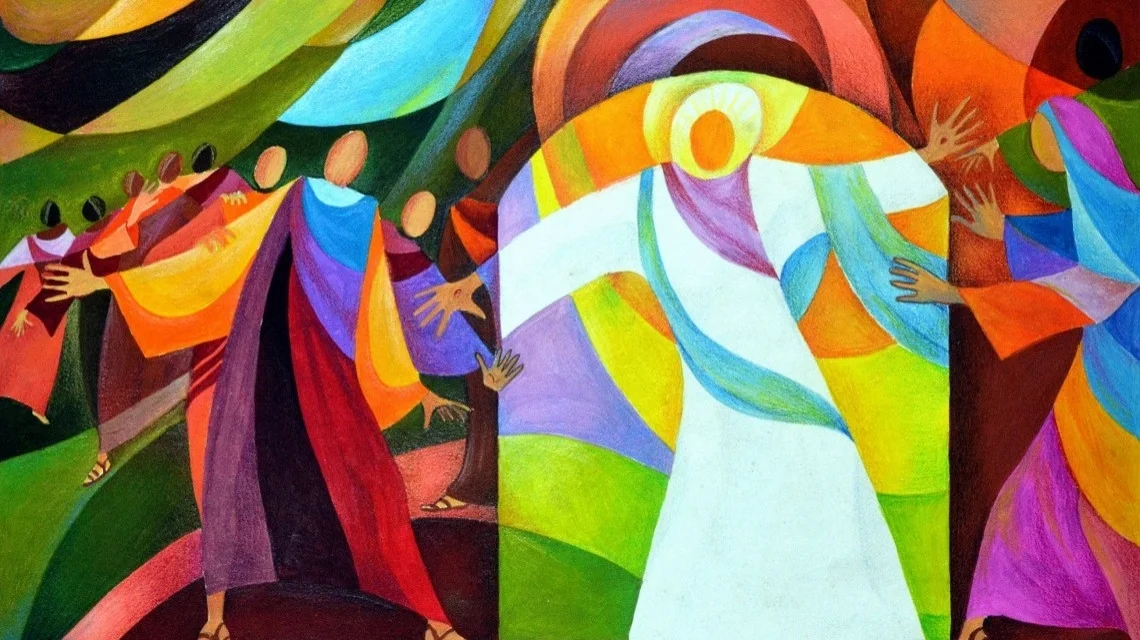From “Doubting Thomas, Black Holes, and Belief,” April 28 sermon by Rev. Nate Klug
Listen to this week’s sermon by clicking here
From “Doubting Thomas, Black Holes, and Belief,” April 28 sermon by Rev. Nate Klug
The Savior comes back, shows his flesh and bones, and Thomas is not there!
Can you imagine the conversation when he returns?
“Uh, Thomas, there’s something we have to tell you…”
And in response to what the disciples share…
Thomas only asks for what all the rest of them have already seen.
He asks for the Savior, right in front of his eyes.
“I want to see the holes in his hands.”
“I want to put my hands in his side.”
He only wants a risen Christ whose existence he can prove.
Two thousand years after Thomas, we live in a world that has the same thirst for proof.
We value rationalism and scientific experiment.
(It’s part of the history of Kensington, isn’t it?
Nobel laureates and researchers making discoveries, doing world-altering work, in this sleepy town.)
Yes, we live in a world that values knowing as much as possible, and testing things out, and observing with our own two eyes.
Ours is a world that says, just like Thomas…
“Before I buy your story…I’m gonna need all the evidence.”
Maybe you followed the news story two weeks ago, when astronomers released the first ever image of a black hole.
The hypothesis of black holes came out of Einstein’s theory of general relativity.
If too much matter or energy gets concentrated in one place…
The result is a gravitational field so strong, that nothing can escape. Not even light.
In a black hole, the entire constructs of space and time could actually collapse…
Einstein was disturbed by this possibility.
But scientists who came after him kept seeing evidence for it.
The universe seems to be filled with these areas, furiously consuming everything around them.
And even though black holes are destructive, they’re also kind of miraculous in the way they operate.
Here’s how the New York Times science writer describes it:
“As hot, dense gas swirls around the black hole, like water headed down a drain…
the intense pressures and magnetic fields cause energy to squirt out the side.
As a paradoxical result, supermassive black holes can be the most luminous objects in the universe.”
In other words… they’re so dark, that they’re bright!
Can you feel your brain expanding yet?
And the picture that was revealed to the public two weeks ago, is of a black hole deep in the heart of a galaxy known as Messier 87.
55 million light-years away from Earth.
The picture is in our bulletin. Take a look at it for a minute.
What does it make you think of?
Is it “darkness made visible”? That’s from John Milton.
Is it “a smoke ring framing a one-way portal to eternity”? That’s the New York Times.
Or is it a deep wound? Is it terrifying nothingness, utter meaninglessness…
that is somehow illuminated, blazing, brought to light?
Is it paradox? Is it mystery?
And, like awestruck children, we wanted to reach our hands towards it.
Like Thomas after the resurrection, we wanted to see what was almost impossible to see.
To place our hands near its gaping void.
To get as close as possible to its reality.
And so we built telescopes and placed them on six mountains, on four continents.
We placed radio antennae on these telescopes, and did computer analysis on the observations for two years.
We wanted so badly to know.
To see as much as our eyes could see.
To understand as much as our minds will allow.
And, just like Thomas, now we have seen.
Here I am, Jesus says. Here’s my body, here are my wounds.
Here’s your proof.
(How’s your thirst? Is it quenched?)
Of course, astronomers are still gathering more and better data.
And the next image they release of a black hole will be much sharper and clearer.
But still, we are left with the question.
How close does this image, this evidence, really get us?
How close can this proof bring us to wrapping our heads around a place in the universe…
where time and space don’t exist…?
Where the past and the future, and here and there, cease to make any sense.
And John’s Gospel doesn’t tell us Thomas’ full reaction…
but I wonder what kind of feeling Thomas is left with…
after the risen Jesus leaves him that day.
I wonder what he feels like the hour afterward. The next morning.
I imagine him staring at himself in the mirror.
“My eyes have seen him. My hands have touched him.
“I’ve got my proof.
“Am I any closer to the mystery?”

